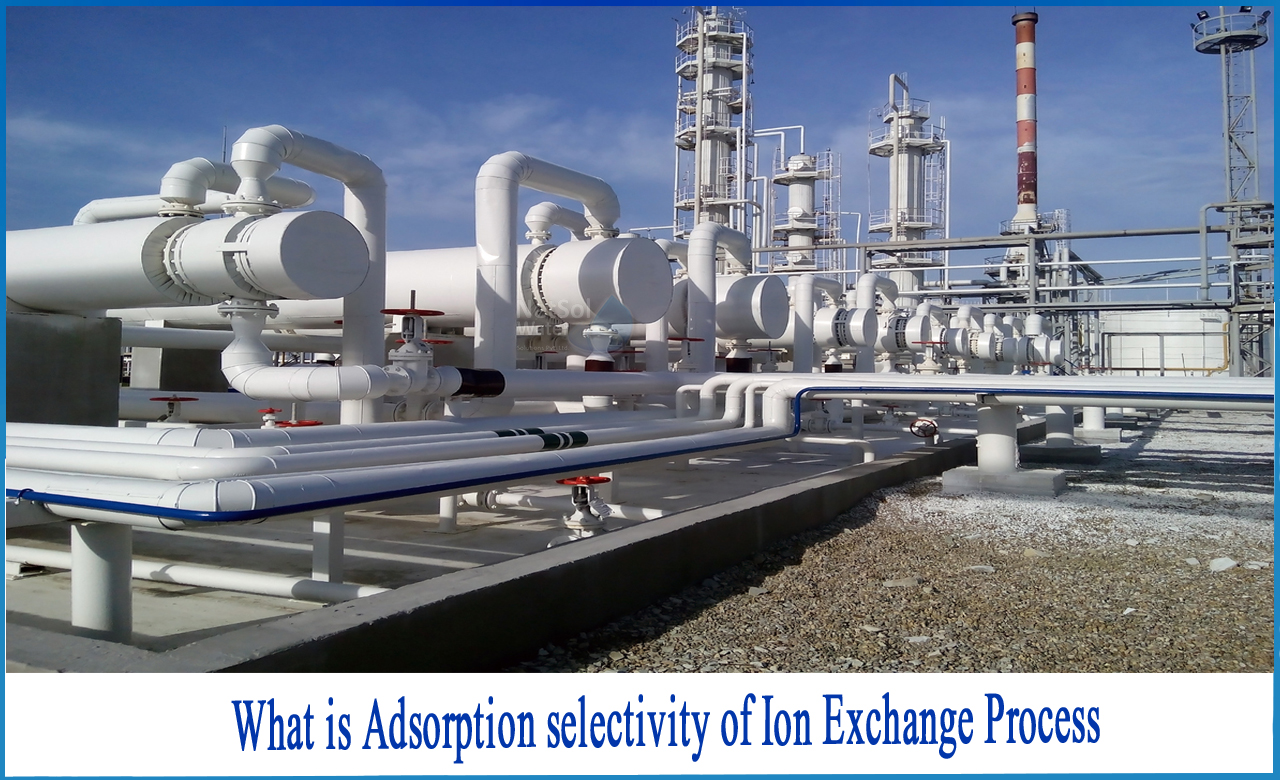What is Adsorption selectivity of Ion Exchange Process?
Ion exchange is a reversible chemical reaction that removes dissolved ions from solution and replaces them with other ions with the same or similar electrical charge.
IX resin is a physical medium that enables ion exchange reactions rather than being a chemical reactive in and of itself. The resin is made up of organic polymers that create a hydrocarbon network. Ion exchange sites are found throughout the polymer matrix, where "functional groups" of positively charged ions (cations) or negatively charged ions (anions) are glued to the polymer network. These functional groups are very good at attracting ions with opposite charges
Adsorption selectivity of the IX Resin
The size of the hydrated form of the resin, as well as its charge, determine its affinity for an ion. The bigger the ion, the more the resin bead needs to expand in order to fit it into the framework. The restraining cross-links oppose the expansion, thus big ions require more effort to permeate the resin than tiny ones. Ions with a greater charge have a stronger affinity for a specific ion exchange resin's functional group.
The amount of water molecules attracted by the hydration sphere decreases as the atomic number grows, despite the fact that the real ionic diameter of each ion increases. This indicates that as the atomic number rises, so does the charge density.
Ion exchange resins are selective in their adsorption and have various affinities for different ions in the solution. Although broad principles exist for the strength of various ions exposed to resin exchange adsorption, distinct resins may differ somewhat.
The following are the major guidelines:
1-Cation adsorption
High-valent ions are typically adsorbed preferentially, whereas low-valent ions are very weakly adsorbed. Ions with greater diameters are aggressively adsorbed among ions of the same valence. The following is the order in which cations are adsorbed:
Fe3+> Al3+> Pb2+> Ca2+> Mg2+> K+> Na+> H+
2-Anion adsorption
Strong basic anion resin adsorbs inorganic acid radicals in the following order:
SO42-> NO3-> Cl-> HCO3-> OH-
The following is the usual order of anions adsorption by weakly basic anion resin:
OH?> Citrate 3?> SO42?> Tartrate 2?> Oxalate 2?> PO43?>NO2?> Cl?>Acetate?> HCO3?
3-Adsorption of coloured matter
Significant alkaline anion resin is frequently used to decolorize sugar solutions because it has a strong adsorption of pseudo melanin (a reducing sugar and amino acid reaction result) and alkaline breakdown products of reducing sugar, but a poor adsorption of carbohydrate pigment. This is thought to be due to the fact that the first two are normally negatively charged, whereas caramel has a low charge.
Ion selectivity is often higher in resins with a high degree of cross-linking, and lower in macro- porous resins than gel-type resins. In dilute solutions, this selectivity is higher, whereas in concentrated solutions, it is lower.
How can we assist?
Professionals in the water quality business can provide more extensive assistance and specialized recommendations when it comes to selecting the proper water treatment for residential, commercial or industrial IX Resins. Netsol Water products and solutions can provide the water your plant requires at every stage!
Our professionals will check the customer's location first, then explain the available options and thus allow you to select what is best for your property. You can always find useful information by liking and following us on YouTube and LinkedIn.
For further inquiries or product-purchase-related questions, give us a call at +91-9650608473 or email at enquiry@netsolwater.com.



